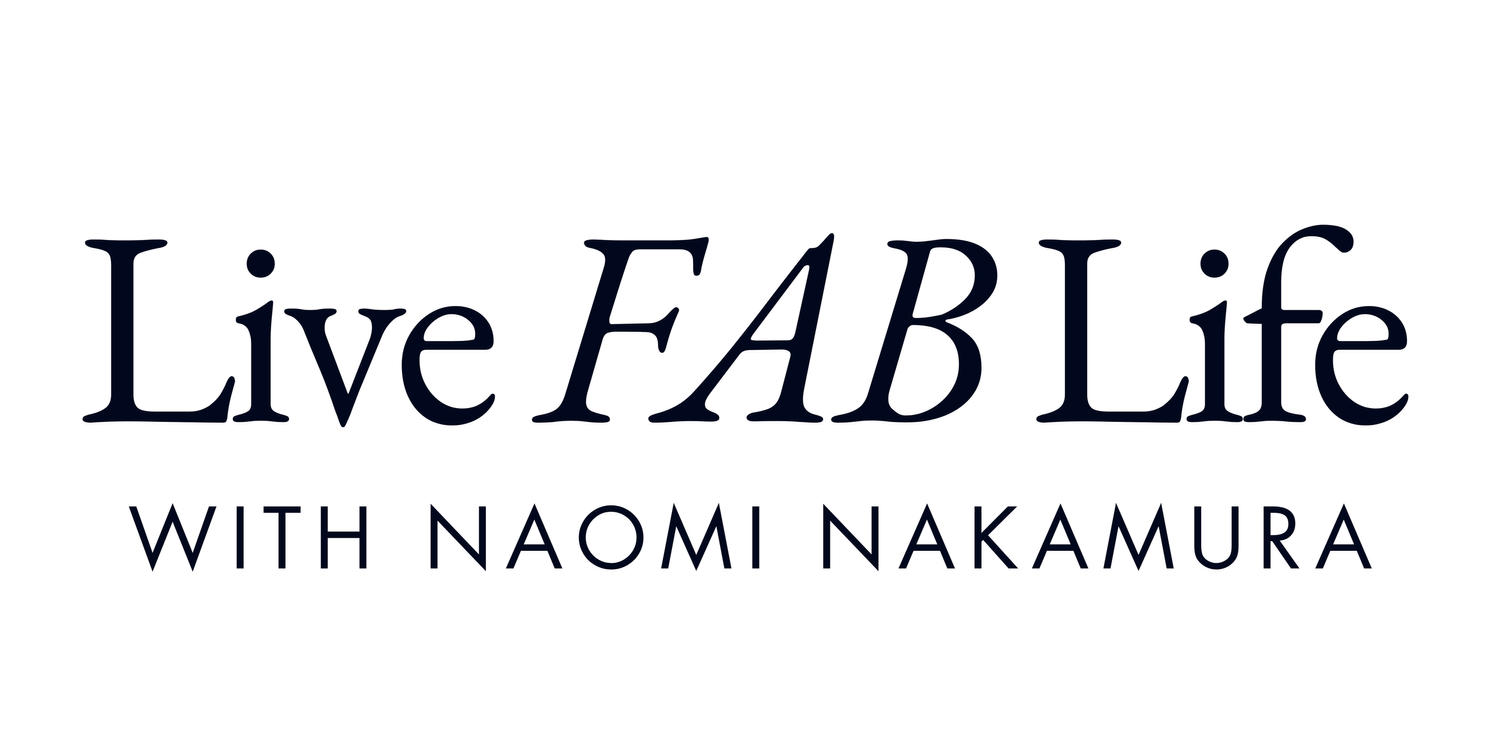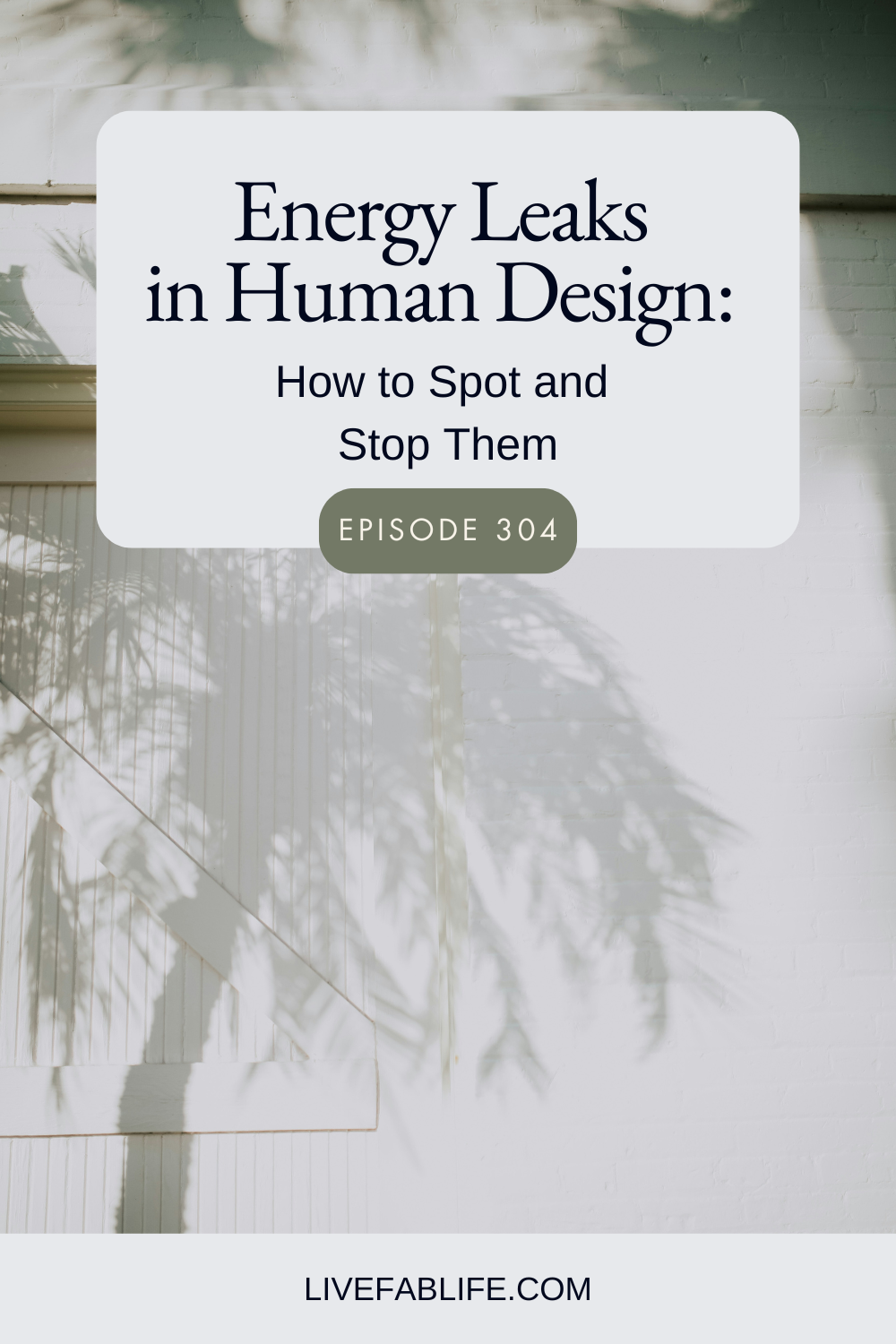Episode 294: Undefined Centers in Relationships: Dealing with Absorbing Others' Energy
In Human Design, Undefined Centers absorb and amplify the energy of those around them, which can deeply affect emotional, mental, and physical well-being in relationships.
This episode explores the challenges and opportunities that arise when navigating relationships with Undefined Centers and guides you on how to manage the energy dynamics within relationships, offering tips to maintain balance and emotional health.
Listen to the Episode:
Mentioned in the Episode:
Episode 121: Understanding Your Priorities & Establishing Boundaries in the Workplace
Healthy x Human Design: Decode Your Health Using Human Design
Connect with Naomi:
Connect on Instagram
“Knowing what energetic boundaries need to be established, to mutually protect each other’s individual energies can lead to a stronger relationship full of mutual respect, compassion, empathy, open communication and trust.”
Read the Transcript:
Do you often feel overwhelmed or influenced by the emotions or the energy of the people around you?
If so, this episode is for you because it’s all about understanding how your Undefined energy centers play a part in your relationship and what you can do to maintain your energy sovereignty.
Throughout this episode, I'll reference your “partner” in a relationship. But I want to note that this doesn't have to mean a romantic partner in a romantic relationship. It can be anyone that you have a commitment to, whether that be family members, friends, colleagues, neighbors, anyone.
If you aren’t yet familiar with Undefined energy centers – let’s touch briefly on them.
The Human Design body graph chart, there are nine energy centers. The Defined Centers are the ones that are shaded in. These Defined Centers are where you generate consistent energy. These centers where you have influential energy and can influence others.
Today, we’re talking about the Undefined Centers - the centers on your body graph chart that white and aren’t shaded in. These are the areas where you’re vulnerable to being influenced by external energy because these are your open centers. This is where you are prone to absorbing and amplifying energy from external sources, i.e., other people.
Undefined Centers have the potential to deeply impact relationships because it’s where you're highly sensitive. Let’s dive into three of the energy centers to see what that could look like.
Let’s start with the Solar Plexus Center. If you have this center Undefined, you’re particularly vulnerable to the emotional energetic states of those who you’re around.
Imagine that the person that you live with – your spouse, partner, roommate, sibling, child - they have a Defined Solar Plexus Center. You’re going to be sensitive to their emotions, potentially influenced by them – picking up on them and mistaking their emotions as your own.
You might experience emotional volatility because it can potentially lead to some confusion between their feelings and yours.
If you have an Undefined Solar Plexus Center you want to be constantly checking in and asking yourself, “Are the feelings that I’m feeling my own, or am I taking on the feelings of my partner?”
Next, let’s look at the Root Center. The Root Center is a pressure center.
If you have an Undefined Root Center, you’re not calm under pressure and that’s ok! I have an Undefined Root Center too and this is just how we’re designed.
But if your partner has a Defined Root Center, you’re sensitive to external pressures which might compel you to act or move at a faster pace than what’s correct for you.
It can feel difficult to manage this external pressure and create a balanced environment, especially if you don’t understand where it's coming from.
Lastly, let's look at the undefined G-Center. The G-Center is the center of self, identity and direction.
If you have an Undefined G-Center, you’re sense of self and life direction can be fluid – often shifting and changing depending on your environment.
As such, you’re vulnerable to being influenced by your partner's self-identity and direction they’re taking in life.
I’m not gonna lie – this one can be tough! I have an Undefined G-Center and sometimes, the simple question of “Who am I?” or “Who are you?” can stump me. At times it’s been one of the most challenging questions for me to answer.
So, this is another instance in which practicing self-observation with non-judgement is key because you want to constantly be assessing if your sense of identity is your own or is it based on your partners?
Is your purpose and direction in life your own or that of your partner's?
Right now, you might be wondering, “Well, how can I tell if, my feelings, this pressure, or who I think I am, is actually me, or am I being influenced by, and taking on my partner’s energy?
Notice if you have emotional fluctuations, or like I said earlier, emotional volatility, stress, and tension.
This is why self-awareness is key and why it’s so important to understand the in’s and outs of your Human Design. AND why it's important to understand what being in alignment feels like so that you can recognize when you’re not in alignment. You have the ability to make that discernment.
Activities like journaling, meditation, and using your Human Design as a daily reference point can help you identify what being in alignment feels like. I shared what my daily journaling practice is like in Episode 284: A Daily Ritual to Develop A Positive Mindset. I’ll link to it in the show notes so you can listen to it, if you haven’t already. The other critical thing to do is to give yourself space for alone time! If your Undefined Centers leave you vulnerable to external influences, then alone time, where you’re free from external energy is essential to learning what being in alignment feels like so you can differentiate when you’re not.
Alone time is where you can gain clarity to understand what your emotions feel like so you can tell when you’re being influenced by your partners.
Alone time is where you can recognize what pressure feels like so you can ask yourself, “Is this pressure coming from me that I’m putting on myself, or am I feeling external pressure that I’m picking up from my partner?”
Alone time is where you can develop a strong sense of who you are and also what it feels like to follow your Authority to guide you in what direction you want to go in.
This is how you live in flow and manage absorbing external energy from your partner through your Undefined Centers.
What would be even more helpful is, if possible, knowing the Human Design of your partner. This can be hugely valuable because then, you’d understand their energy, and how their functions and flows.
So not only could you develop your self-awareness, but you also understand how your partner is designed and what makes them – them.
You’d have insights into how you complement each other and how you’re different; which then lets you know how you can best support them, and if the interest is mutual – meaning they also have an interest in Human Design, how you can mutually support each other.
Having an intimate understanding of your Human Designs can also help you understand what boundaries need to be established to protect your energy.
From there, we have to talk about boundaries, especially in relationships. I’ve done a handful of episodes on boundaries, specifically:
• Episode 121: Understanding Your Priorities & Establishing Boundaries in the Workplace • Episode 154: Redefining Balance with Boundaries • Episode 218: Human Design and Boundaries • Episode 219: How to Establish Boundaries
…all of which I’ll link to in the show notes which you’ll find at www.livefablife.com/294 for Episode 294.
Knowing what energetic boundaries need to be established, to mutually protect each other’s individual energies can lead to a stronger relationship full of mutual respect, compassion, empathy, open communication and trust, which, in my opinion, are the foundations for any successful partnership!
Think about it – when you’re able to openly communicate to your partner that you need space for energetic clarity, if you know their Human Design, then you’re better equipped to openly communicate this need in a way that doesn’t hurt feelings or create conflict.
For example, say you have an Undefined Solar Plexus Center. Being able to tell your partner, “Your emotions are overwhelming to me, and I need a few minutes to myself to recharge and compose myself.” And your partner, knowing your Human Design and why you need this – well, you might be able to avoid an argument, tension, conflict and ultimately stress – for both of you!
I have a personal experience with this.
I have an Undefined Solar Plexus Center. But someone who I’m very close to who has a Defined Solar Plexus Center. And this person is easily and often “up in their feelings” if you know what I mean. They feel the highest of highs and the lowest of lows.
To them, it’s perfectly natural to feel this way. But I’m not designed for emotional volatility, yet I’m vulnerable to absorbing – and amplifying those emotions, which I have done in the past. It felt unnatural, overwhelming and frankly, a bit out of control.
But since learning about Human Design, and our Human Designs, I have spent a lot of time alone and have developed a discernment to differentiate between what emotional volatility, i.e., not my emotions and what being a non-emotional, more even keeled, feels like.
Through self-observation, I’ve come to be able to recognize when I’m absorbing their energy and I’ve learned to pause, give myself space, and ask for space to reset myself.
There’s definitely been a learning curve, but we’ve also avoided tense moments and misunderstandings. It really has opened the door to mutual understanding, respecting boundaries and each other, and ultimately a stronger relationship.
So, to recap, get to know your design and what your Undefined Centers are and what that means and bring that insight into your relationships. Establish boundaries that are necessary to preserve and optimize your energy, and if possible, understand your partner’s design, the definitions of their energy centers, and how you complement each other and how you’re different.
And have a plan for how you can support each other, hopefully with greater insight, understanding, and empathy.
As you can imagine, this is a topic that often comes up with my coaching clients, and I always ask if it's possible to access their partners Human Design and then we talk about how their designs have impacted their relationships and then how that’s reflected in their health and well-being.
If you want to learn more about energy centers, check out “Energy Management and the Nine Centers”, my program that’s solely focused on the nine energy centers. If you want to get to know your Human Design more intimately or that of your partners, I invite you to order a Human Design Playbook, which is how I do Human Design readings – through a personalized podcast episode and PDF guide.
Links to all in the show notes!
Once again, thank you so much for being here! I'll see you right back here again next time. Bye for now!
Naomi Nakamura is a Health x Human Design coach who’s creating a healthier society through aligned energy.
She blends a bespoke mix of Functional Nutrition and Human Design to help others shift into alignment to leverage and correctly manage their energy to support their body, mind, and spirit.
She believes that when we embrace our authenticity and lean into our bio-individuality, we naturally live a life of freedom, empowerment, and optimal health.
Naomi resides in the San Francisco Bay Area and can often be found exploring the area with her puppy girl, Coco Pop!
Connect with Naomi on: Instagram
| Pinterest







